
Huwon Secret Garden is a rear garden at Changdeokgung Palace that flows naturally with nature and was used as a place of leisure by members of the royal family. The garden, which has also been known as Bukwon, Geumwon, and Biwon. At 78 acres, the garden takes up about sixty percent of the palace grounds.
This intimate rear garden, which today is the highlight of any visit to Changdeokgung Palace, was first constructed during the reign of King Taejong, who ruled from 1400 to 1418. Its location allowed access from either Changdeokgung Palace or adjacent Changgyeonggung Palace.
The royal family has used the garden as a place of rest since the reign of King Taejong (1400 to 1418). They would come here to contemplate life, write poems, and hold banquets. The garden was also used as an archery range and as the location of military drills.

The highlight of the garden is the two story Juhamnu Pavilion which was used by as a library and for reading by the king. The pavilion is located on a small, peaceful square lily pond.
Many of the pavilions and buildings located here were destroyed by fire in 1592 during the Japanese invasion of Korea.
Restoration work began in 1623 during the first year of the reign of King Injo. This work continued from one king to the next leading to its present appearance.
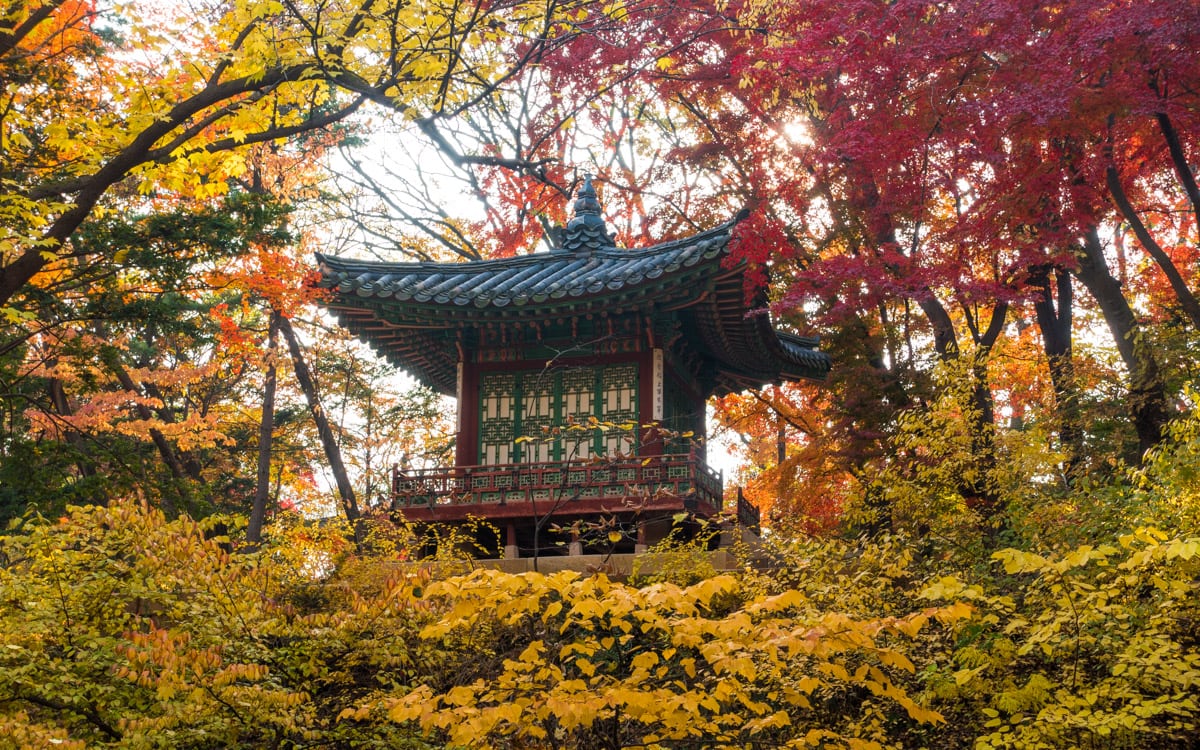
The design of the garden flows naturally with the surrounding nature. The exquisite design is adapted to the topography, geography, and ridges of Mt. Bugaksan. Artificial landscaping is minimal and left untouched to human hands as much as possible. Many of the trees seen here today are over 300 years old. The landscaping and trees are a great example of Joseon Dynasty gardening design.
What to see at Huwon Secret Garden
Juhamnu Pavilion

Juhamnu Pavilion is a two story pavilion that served as a library and reading room during the reign of King Jeongjo. The two story pavilion was first constructed in 1776 during the first year of the reign of King Jeongjo.
A royal library known as Gyujanggak was found on the first floor. Gyujanggak was not only used as a library but also as a political research institute for the king as he worked on his reform ideas. The second floor was used as a reading room.
Jeongjo was always under pressure from political foes while he held power. He worked hard to strengthen his mind and body and went on to become a great leader who enlightened and served his people to the best of his ability.
The small gate leading to Juhamnu Pavilion is known as Eosumun Gate. The name Eosumun refers to the fact that a fish cannot live outside of water. This was a reminder to King Jeongjo that he as a ruler must consider and respect the people he rules.
Aeryeonjeong Pavilion
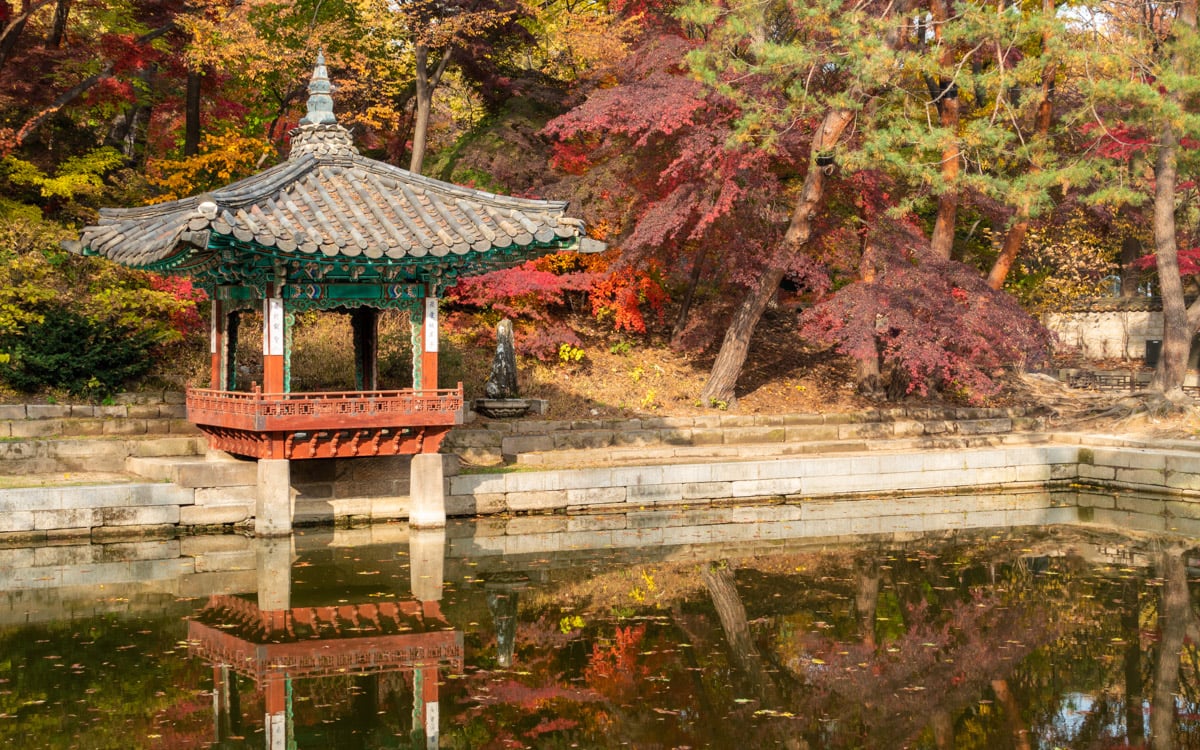
Aeryeonjeong Pavilion is a small square pavilion located on Aeryeonji Pond. It was first constructed in 1692 during the reign of King Sukjong. The pavilion was originally located on a small island in the middle of the pond. After the island was removed, the building was relocated to its current location on the side of the pond.
The first son of King Sukjong, Crown Prince Hyomyeong, often visited here to relax and contemplate state affairs. The location makes it a very peaceful and popular area of the garden.
The name means “love of lotuses” which King Sukjong was very fond of.
This pavilion is one of the only buildings at Changdeokgung Palace that faces north. This location allowed more light for reading and contemplation. Another pavilion that faces north is Uiduhap Pavilion.
Bulromun Gate
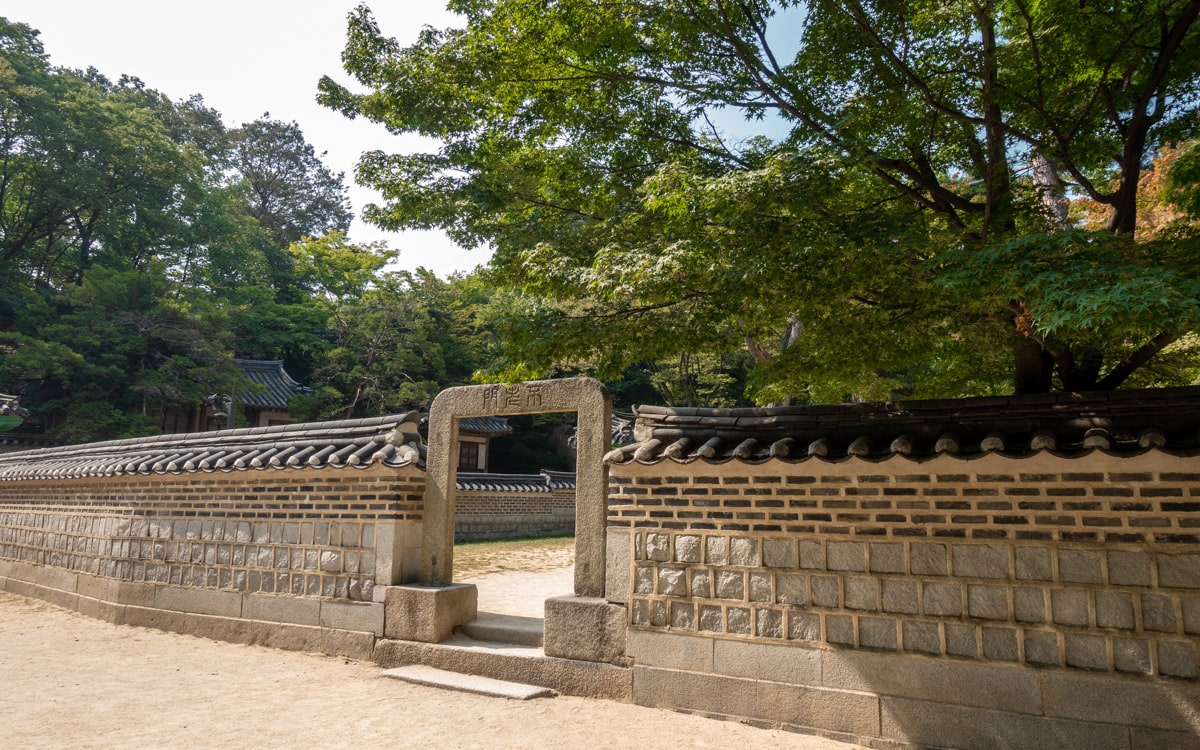
Bulromun Gate is a single rock stone gate inside the Huwon Secret Garden. Anyone who passes under is said to be blessed with long life and good health. On the tour, you can pass under it and be blessed with good health and longevity. Bulromun leads to Aeryeonjeong Pavilion and Uiduhap Pavilion.
A replica of the Bulromun Gate can be found inside Gyeongbokgung Station on the Seoul Subway.
Changdeokgung Chinese Juniper
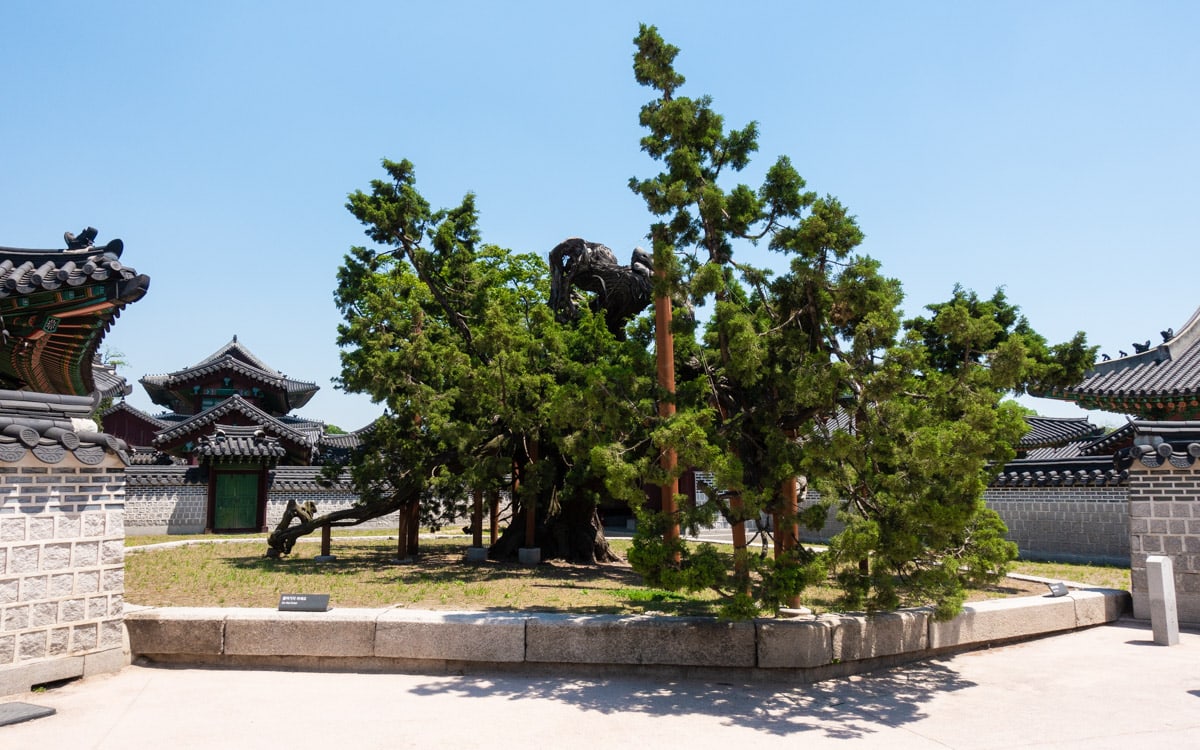
This tree that stands here, known as the Changdeokgung Chinese juniper, is thought to be over 750 years old. The tree measures in at 12 meters (40 feet) high and 5.9 meters (19 feet) in circumference.
These types of trees were often used during rituals for incense because of their aroma. Chinese juniper trees were commonly used for incense during rituals by worshipers who visited the nearby Seonwonjeon Shrine.
If you take a tour of the Huwon Secret Garden, the tree will be located on the left hand side as you exit the tour and walk back out to the palace.
Jondeokjeong Pavilion
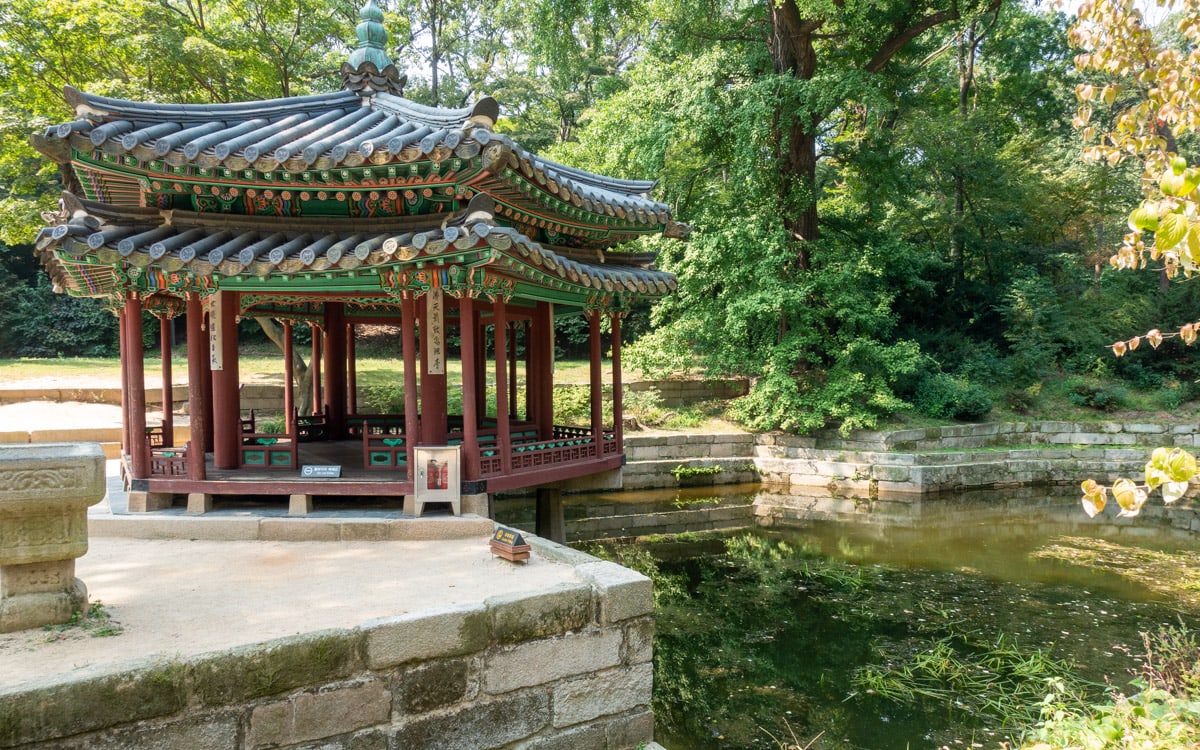
Jondeokjeong Pavilion is a hexagonal, two story roof pavilion. On the underside of the painted ceiling are two dragons playing with a wish fulfilling jewel. This jewel is known as a cintamani. The painting is symbolic of total royal authority.
A tablet hangs on the north side of the pavilion that reads “All streams of the world have moons reflected on them, but there is only one moon in the sky. The moon in the sky is me, the king, and the streams are you, my subjects.” This plaque reiterates that King Sejong desired full royal authority over the people of his country.
Jondeokjeong Pavilion is located on a small and peaceful pond with wonderful views of the surrounding garden. The pavilion would have been a peaceful retreat for anyone in the royal family that would have wanted to rest and relax.
Seonhyangjae Hall
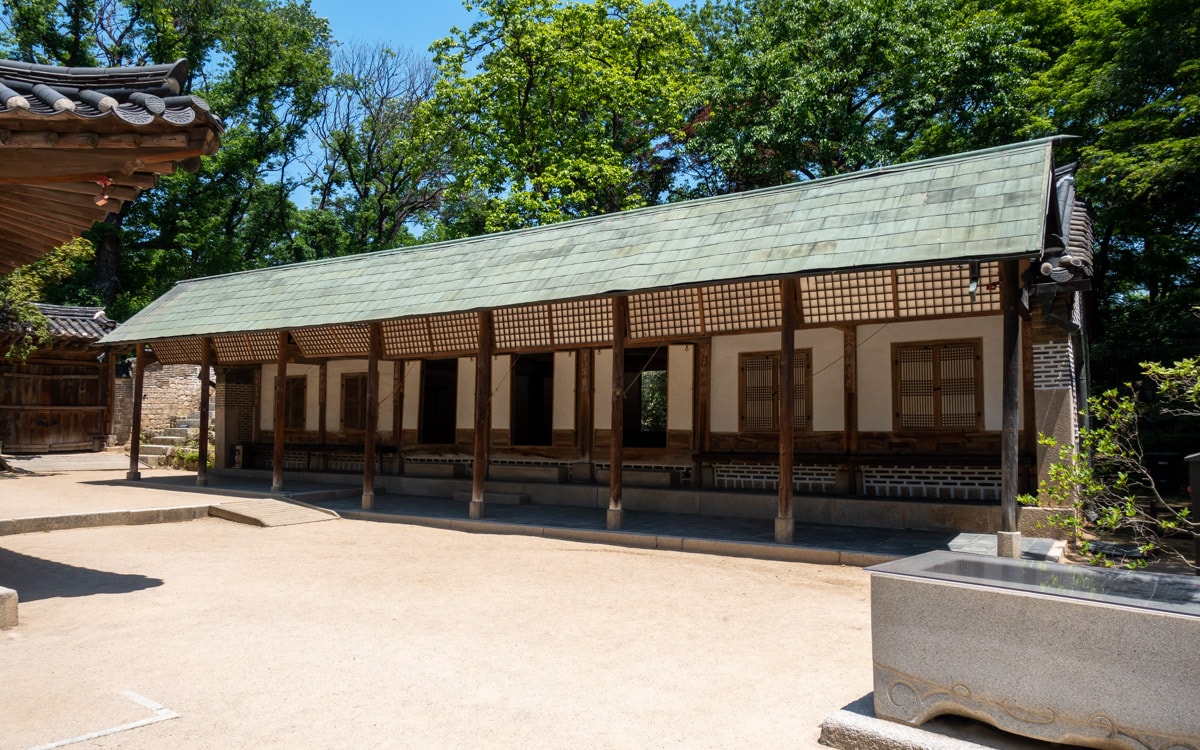
Seonhyangjae Hall was built as a study for the adjacent Yeongyeongdang Hall. It was here where books were stored and read and where guests were often greeted.
Records known as Gunggwolji (Record of the Palace) were found noting the function of this luxurious building as a study.
The building features, which faces to the north and south, features a sun shade on the western side which was used to block the setting sun, wind, or rain from those inside reading books or studying.
On the inside of the building is a wide wooden floor with heated floors on each side of the main floor. A bronze plate once hung from the rood.
The building is 7 kan wide and 2 kan in depth. A kan is the interval between pillars.
To the east is a terraced flower garden that was built into the hill.
Uiduhap Pavilion
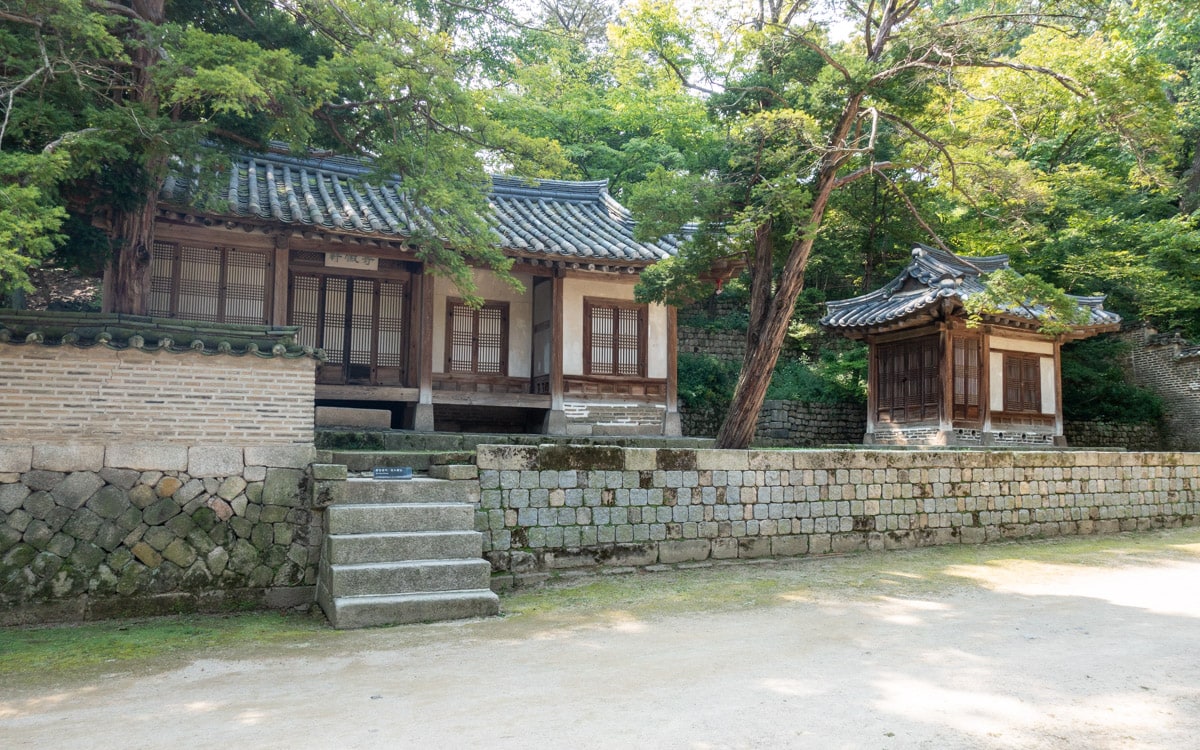
Uiduhap Pavilion was built by Crown Prince Hyomyeong as a place of study, reading, and contemplation. Unlike other royal structures, the architecture is conservative and not decorated with vivid paintwork. It is one of the most modest buildings at Changdeokgung Palace.
The structure was built in 1827 by Hyomyeong who was the first son of King Sunjo. Sunjo, who reigned from 1800 to 1834, was the 23rd Joseon Dynasty king.
Hyomyeong only lived to be 22. Known for his intelligence and fine character, he handled state affairs on behalf of his father from the age of 18.
Along with Aeryeonjeong Pavilion, these are the only buildings in the palace that face north to allow more sunlight for reading and contemplation.
Yeongyeongdang Hall
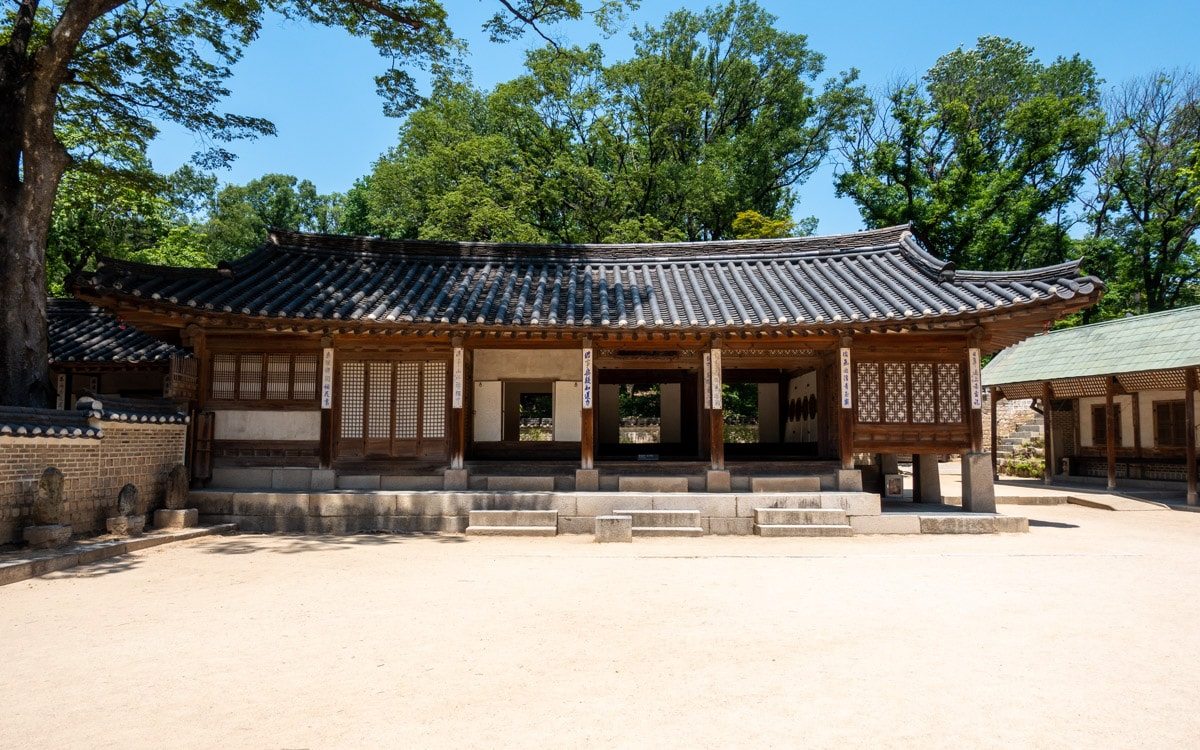
Yeongyeongdang Hall was built in 1828 by Crown Prince Hyomyeong for Jinjakrye, which was a special ceremony for his father King Sunjong. During this ceremony court officials would present food and wine to the king and queen as a sign of strong royal authority.
Yeongyeongdang was also the men’s quarters. It was here where the master of the house resided. Inside is a main room where the master would meet with guests and where he stayed during the day. A separate room with a raised floor was used as a bedroom in the summer.
Yeongyeongdang is built with stone pillars on top of a stone platform. The roof is single-eaved and features roof extensions at each of the corners. Windows surround all four sides of the building which were designed to be lifted during the warmer summer months.
Next to Yeongyeongdang is Seonhyangjae, which was used as a study and for reading books inside the garden.
Huwon Secret Garden Information
Hours
February–May : 10:00-18:00
June-August : 10:00-18:30
September-October : 10:00-18:00
November-January : 10:00-17:30
Tours are offered in four languages : Korean, English, Japanese, and Chinese.
Korean : 10:00, 11:00, 12:00, 13:00, 14:00, 14:30, 15:00, 16:00, 16:30
English : 11:30, 15:30
Japanese : 10:30, 13:30, 16:15
Chinese : 12:30
The guided tour lasts about 90 minutes.
Admission
The cost of joining the guided tour is 5,000 won. This fee is in addition to the 3,000 won ticket price for entry into Changdeokgung Palace.
Both the palace and garden are included with the integrated ticket of palaces for 10,000 won.
How To Book Huwon Secret Garden Tour
At Changdeokgung Palace
Guided tour tickets can be purchased at the palace on the day of the tour. There are about 50 tickets per tour. These tickets sell out quickly, especially in the high season and summer.
Online Reservations
Reservations can be made by visiting http://eng.cdg.go.kr/reservation/reserv_01.htm
Map
Additional Resources
Klook
Klook offers discounted tickets and reservations for various attractions and services in Seoul, from theme parks and museums to tours and transportation options.
Viator by TripAdvisor
Viator is a popular online platform that helps travelers book tours, activities, and unique experiences worldwide, including in Seoul. It connects users with a wide selection of options – from sightseeing tours to cultural events and outdoor adventures – all offered by local providers.
Rakuten
Save money while exploring Seoul with Rakuten's cashback program. Book your hotels or other services through Rakuten and enjoy cashback rewards and exclusive deals.
If you sign up using the link below, you could earn $30 cashback on your first purchase over $30.
Book Recommendations
For an immersive guide to Seoul, many travelers choose to bring a book along. Fodor's Seoul, for example, offers detailed recommendations on sights, restaurants, maps, and travel tips.
Nearby Sights
National Children's Science Center
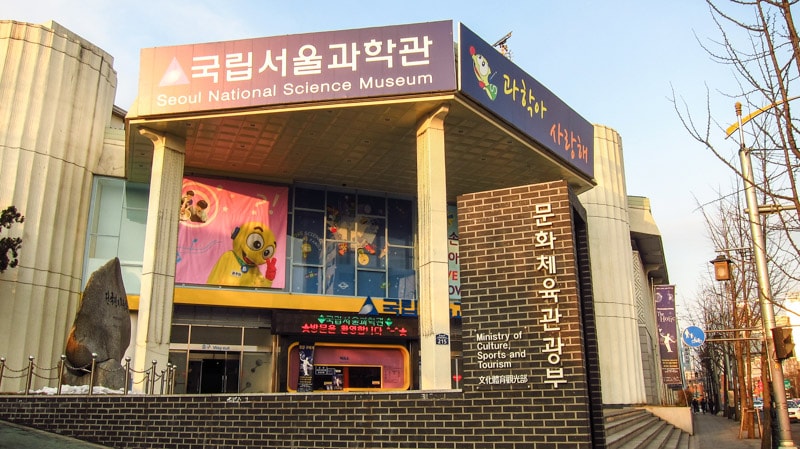
Just north of the main gate of Changgyeonggung Palace is National Children's Science Center which features interesting exhibits for both children and adults. This museum was formerly known as the Seoul National Science Museum. The museum which is often missed by most tourists features three floors of exciting and interactive exhibitions along with a museum shop and lounge where parents and visitors can relax and rest.
Seoul Munmyo

Seoul Munmyo is a shrine dedicated to Confucius, his disciples, and other great scholars. In the past, it has also gone by the name Munseonwangmyo. During the Joseon Dynasty, the buildings were used as an educational institution. Seoul Munmyo was first built in 1398 during the 7th year of the reign of King Taejo.
Changgyeonggung Palace

Changgyeonggung Palace, located in the heart of Seoul, has been used as a royal residence and and as a secondary palace for queens and the king's father. A summer palace known as Sunganggung was first built at this location in 1104 during the reign of King Sukjong of the Goryeo Dynasty.
Changdeokgung Palace
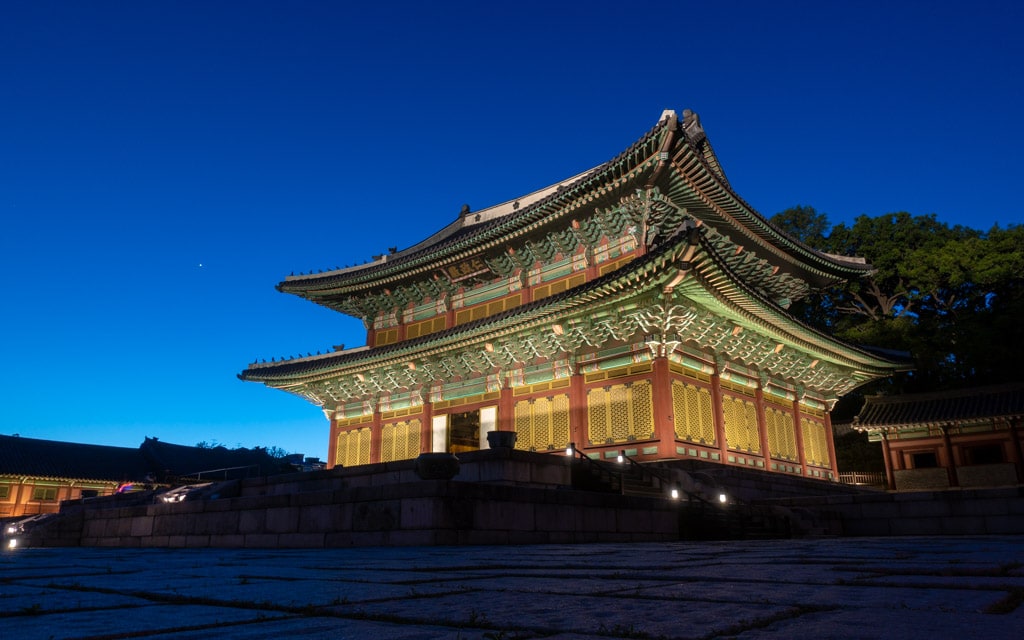
Changdeokgung Palace is a grand royal residence located east of Gyeongbokgung Palace. It is the best preserved of the remaining Joseon palaces. The palace is the second oldest in Seoul after Gyeongbokgung and was used as a secondary palace when first built. Construction on the palace known as "the palace of illustrious virtue" began in 1405 during the reign of King Taejong and was completed in 1412.
Daehan Hospital
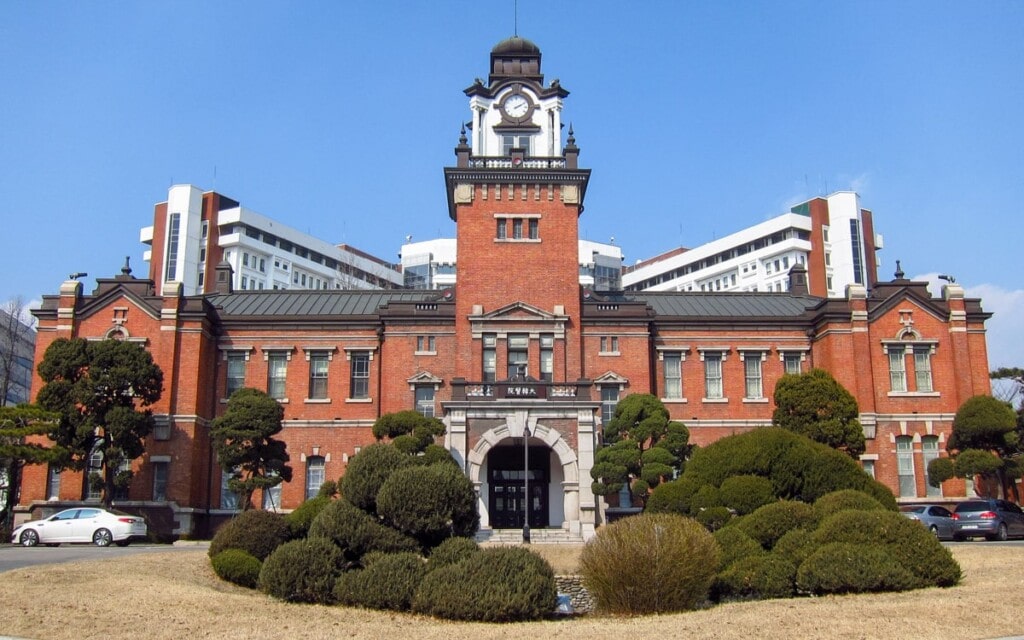
This red brick building was once the main building of Daehan Hospital, the leading medical and hygiene institution during the Great Han Empire (1897-1910). The building is now located on the grounds of the Seoul National University Hospital. In August 1906, construction on Daehan Hospital began on the site of Hamchunwon, the former outer garden of Changgyeonggung Palace.
Bukchon Traditional Culture Center
The Bukchon Cultural Center is a hanok (Korean style building) that promotes the history and values of the traditional Korean Bukchon Hanok Village. The building was sold to the city of Seoul and reopened on October 29, 2002 as the Bukchon Traditional Culture Center. The hanok was once owned by the Min family.
Last Updated on Nov 9, 2024